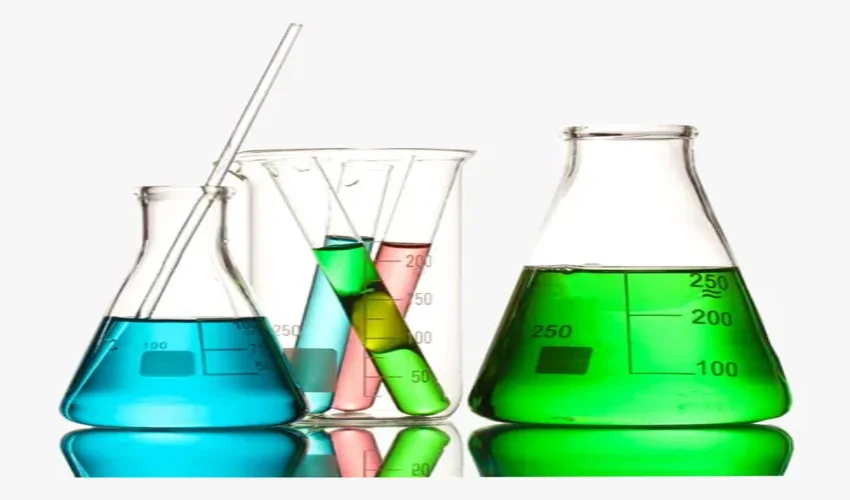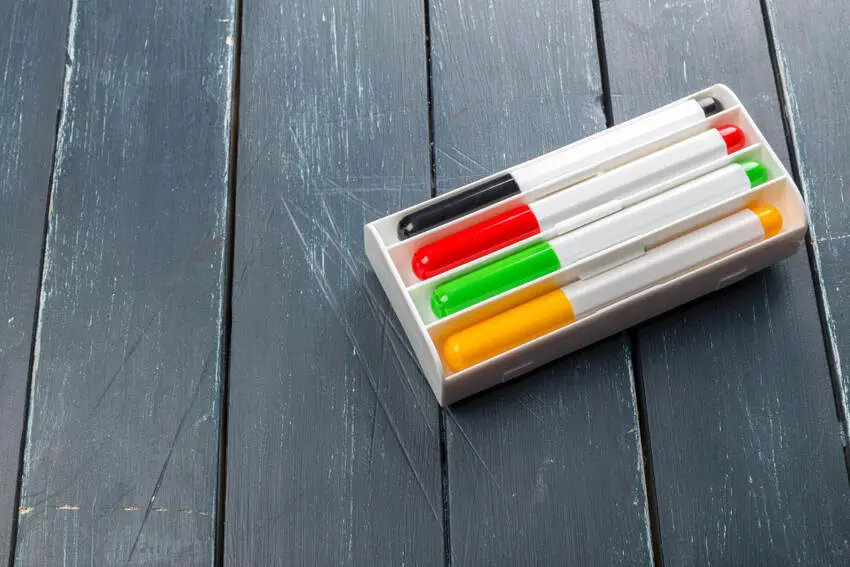Laboratory flasks are a part of the laboratory glassware range manufactured by the most popular Laboratory Flasks Manufacturer, Chem Lab Nigeria. Laboratory flasks serve various purposes, and for this reason, there is a wide range of laboratory flasks manufactured and supplied by laboratory flasks suppliers.
Check Out The Range With Laboratory Flasks Suppliers
The laboratory flasks are available in various shapes and sizes, each designed for specific purposes. The choice of flask depends on the nature of your experiment or the task at hand. Here are some common types of laboratory flasks and their appearances, along with their primary purposes:
Erlenmeyer Flask/Titration Flasks
Physical Features: It is a conical flask with a flat, broad bottom, a narrow neck, and a single neck opening.
Purpose: Erlenmeyer flasks are versatile flasks. Their major purpose is to handle liquid solutions by facilitating their
pouring, mixing, and storage. Some titration flasks support the preparation and growth of microbial cultures.
The unique feature of a narrow neck helps to reduce the risk of splashing and allows for easy closure with a stopper.
Round-Bottom Flask
Physical Appearance: The name of the flask suggests that it has a round or spherical bottom and a long neck.
Purpose: Round-bottom flasks are ideal for heating and boiling liquids. Their shape promotes even heat distribution, making them suitable for distillation and reflux procedures. Laboratory flasks suppliers supply round-bottom flasks available in the size range from 250ml-1000ml.
Florence Flask/Boiling Flask
Physical Appearance: It has a round-bottom flask but has a pear-shaped body. The rounded base allows for stability when placed on a flat surface. The neck of the flask is narrow, elongated and cylindrical with the opening at the top.
Purpose: Their shape makes them ideal for boiling and heating, particularly in preparing reagents and chemical reactions. The laboratory flasks suppliers supply and export florence flasks with a size range from 50 ml-4000 ml or more.
Volumetric Flask/Measuring Flask/ Graduated Flask
Physical Appearance: Volumetric flasks have a pear-shaped body with a slender, cylindrical neck. Its major difference from other flasks is its precise volume markings etched on the neck and a single narrow neck opening.
Purpose: It is ideal for accurate measurement and preparation of solutions in quantitative analysis. Researchers use them in analytical chemistry and titrations as they have a precisely calibrated volume.
Boiling Flask
Physical Appearance: Similar to round-bottom flasks with a long neck, but typically thicker-walled. The thick walls promote uniform heat distribution and minimize evaporation.
Purpose: Boiling flasks manufactured by laboratory manufacturers are made with high-quality borosilicate glass. In the lab they are ideal for general heating applications such as boiling and reflux. Their excellent resistance to thermal processes makes them ideal for various laboratory processes.
Filter Flask/Büchner flask/ Vacuum flask
Appearance: It has a cylindrical shape with a flat bottom and a long, cylindrical neck. Its most unique feature is that it has a sidearm, which is a small, narrow, branch that branches off from the neck. This sidearm connects the filter flask to a vacuum source, creating a vacuum environment within the flask. Some filter flasks supplied by laboratory flasks suppliers come with volume markings engraved on the neck to indicate the volume of the liquid filtered.
Purpose: Filter flasks are used in vacuum filtration setups to separate solids from liquids. The sidearm helps to attach a vacuum hose to assist with filtration.
Kjeldahl Flask
Appearance: Kjeldahl flasks have a lower body, which is bulbous spherical, and the upper body has a single, elongated, narrow neck. It has a narrow neck opening that secures the seal with a stopper.
Purpose: The name of the flask itself tells about its purpose. They are used for the Kjeldahl method. The method is an analytical technique that determines nitrogen in organic compounds. The flasks act as reaction vessels during digestion and distillation processes. It enables the conversion of organic nitrogen compounds into ammonium sulfate and the efficient collection of ammonia gas.
Reaction Flasks/Reaction Vessels
- Physical Shape: This flask has a spherical or round bottom and a long, cylindrical neck. It is available in various forms, such as:
- Round-Bottom Flask.
- Reflux Flask
- Dean-Stark Apparatus
- Three-Neck Flask
- Four-Neck Flask
- Pressure Reaction Flask
- Jacketed Reaction Flask
- PTFE-Coated Reaction Flask
- Ace-Thred Reaction Flask
- Parallel Reaction Flask
Purpose: These flasks support specific chemical reactions, allowing researchers to control reaction conditions, extract specific components, or facilitate reactions that require specialized setups.
P.S: The appearance of laboratory flasks is associated with the intended purpose and functionality. Selecting the right flask for a particular task is essential to ensure the success and safety of experiments in various scientific disciplines. You can take the assistance of laboratory flasks exporters and suppliers. Their team shall guide you about the various flasks and how they suit your lab needs.
Author Bio:
Manufacturers of laboratory flasks adhere to strict quality control measures and often comply with international standards to ensure the safety and reliability of their products. These standards may include ISO certifications and adherence to specific regulations, such as USP (United States Pharmacopeia) or ASTM (American Society for Testing and Materials) standards when applicable. Laboratory Flask manufacturers work to provide high-quality, precision instruments that are essential in scientific research and experimentation.
















Leave a Reply